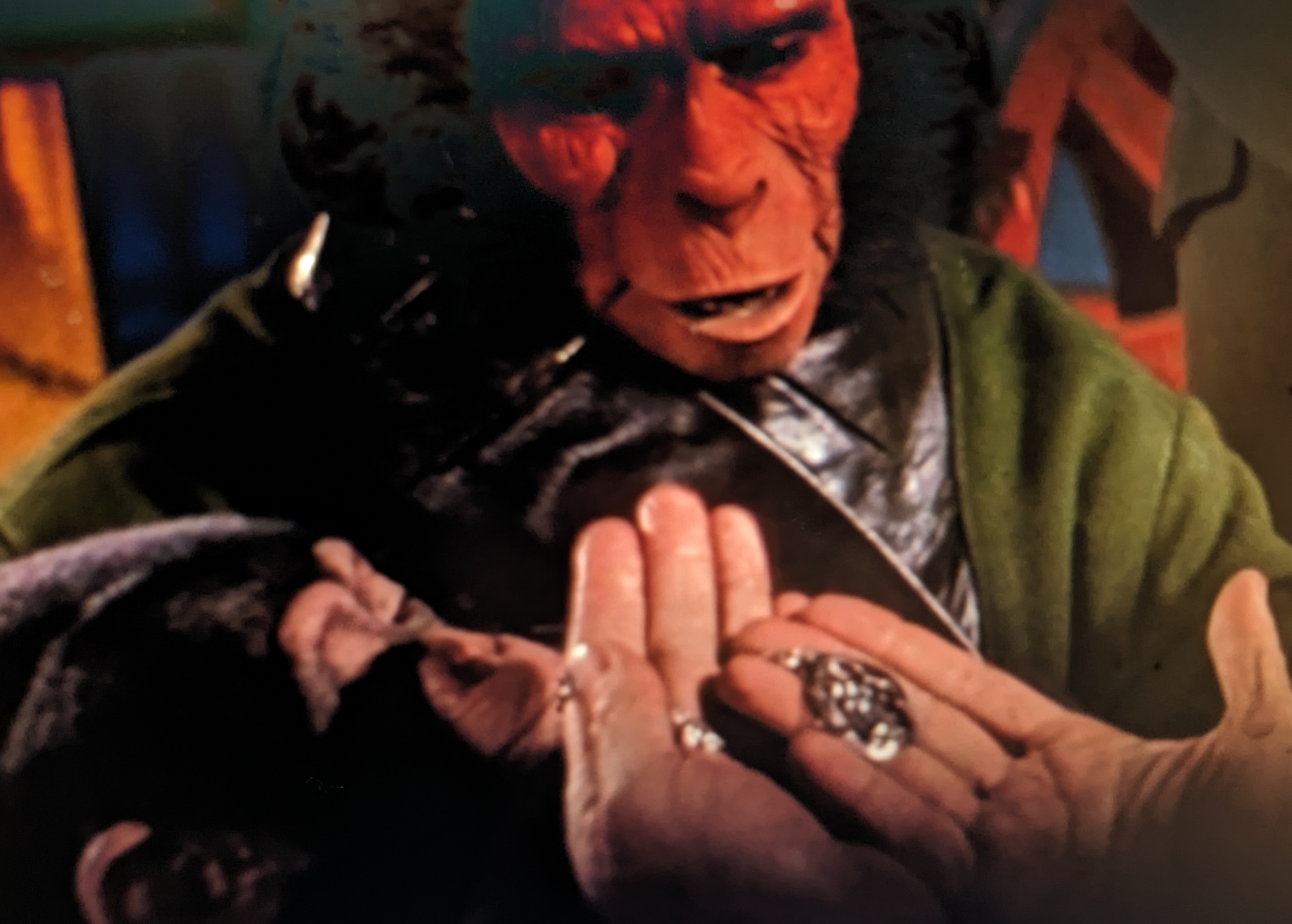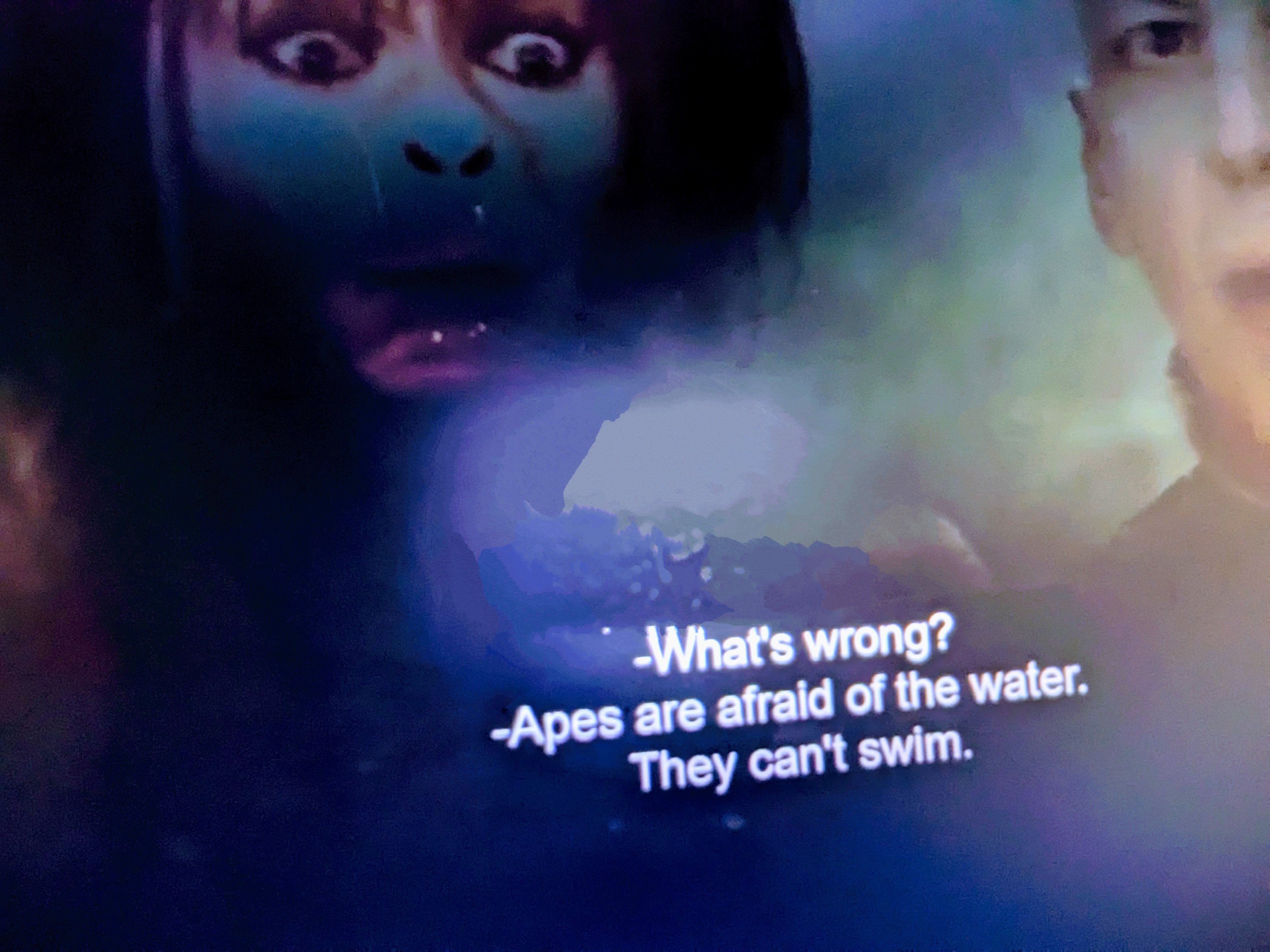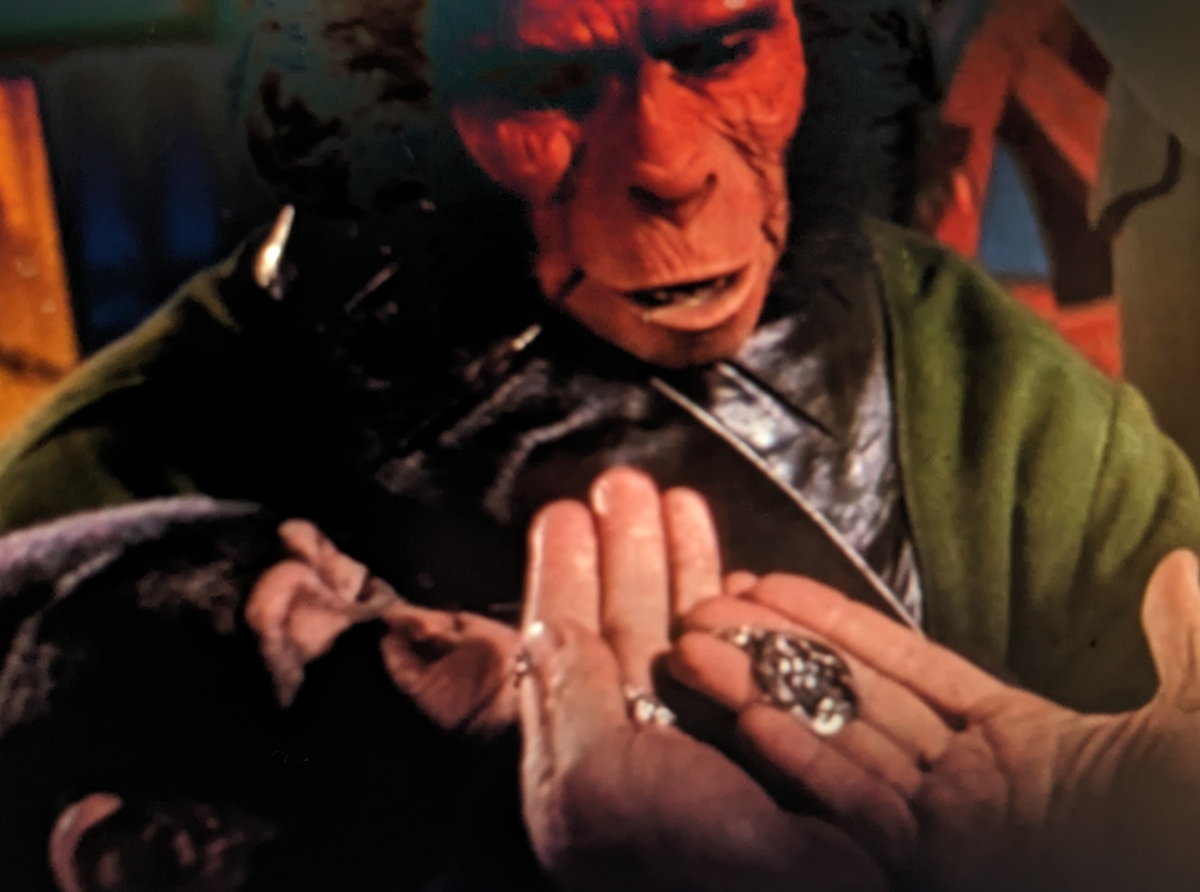Easter Eggs in “Kingdom of the Planet of the Apes”
-
Nova and Bright Eyes:
- Nova, a name shared by both female humans and apes, pays homage to Linda Harrison’s character Nova from the original 1968 “Planet of the Apes.”
- In the 2024 Kingdom, according to Rakka , all females were called Nova by Caesar so they aptly named the first Ecko (humans) they came into contact with the name Nova.
- A Doll appears in scene where Noa meets the human helping the apes it says the word , "Mama". This is a reference to the doll in the forbidden zone found by the captain and Nova in the original 1968 Planet of the Apes. A similar Doll saying "Mama" is also heard at the end of the 1971 Escape From the Planet of the Apes . The little girl Nova in the 2017 War for the Planet of the Apes also has a similar doll that says "Mama".
- “Bright Eyes” is a term given to to Charlton Heston’s character by the apes in Planet of the Apes. This name is also given the first ever ape they experiment on in the 2011 Planet of the Apes.

-
The Medallion:
- The medallion given to Noa by Raka holds a deeper reference. It mirrors the medallion given to baby Caesar in the 1971 film “Escape from Planet of the Apes.”
- This medallion resembles the symbol carried by St. Francis of Assisi, the patron saint of animals.
-
Continuity Challenges:
- David Chappelle raised an interesting point about continuity. In Tim Burton’s 2001 “Planet of the Apes,” there’s a scene where Helena Bonham Carter’s character, Ari, cannot swim. This detail was never addressed in previous incarnations.
- In reality, apes and chimpanzees can swim, albeit not very well. However, in the 2024 Kingdom, Rakka’s struggle against the river current highlights the danger even for strong swimmers.
- Chappelle also claimed that an ape was seen smoking a Newport cigarette, but this isn’t evident in the 2024 film or any other movies in the franchise.
- Additionally, Noa’s encounter with Nova inside a fish house suggests that apes now include fish in their diet, a departure from the original series where they were considered vegetarians.


In previous incarnations of the franchise, there was a recurring scene featuring apes enjoying a fruit that resembled melons. However, comedian David Chappelle famously suggested that these were watermelons. Let’s set the record straight:
-
What Were Those Melons?
- Contrary to Chappelle’s claim, those melons were not watermelons. Instead, they represented a fictional fruit unique to the “Planet of the Apes” universe.
- These melons appeared in various scenes, often sliced open to reveal a vibrant red-orange and green interior. Their appearance was consistent across different films.
-
The Lab Scene in “Escape from Planet of the Apes” (1971)
- In the 1971 film “Escape from Planet of the Apes,” Cornelius and Zira find themselves in a lab. The scientists there recognize that Cornelius and Zira are descendants of chimpanzees.
- To accommodate their dietary needs, the scientists provide a paper bag filled with large California oranges and grapefruits. This scene reinforces the idea that the apes’ diet primarily consists of fruits and vegetables.
Dietary Evolution in the 2024 Kingdom
In “Kingdom of the Planet of the Apes,” we witness significant changes in ape behavior and diet:
-
Expanded Diet:
- The apes’ diet has evolved beyond fruits and vegetables. They now include fish in their meals, suggesting a broader range of available food sources.
- This expansion reflects the changing dynamics of their society and their adaptation to the post-apocalyptic world.
-
Hunters and Gatherers:
- Unlike their earlier counterparts, the apes in the 2024 Kingdom are not only gatherers but also hunters. Their survival instincts drive them to seek out diverse food options.
- The inclusion of fish in their diet highlights their resourcefulness and ability to adapt.

